Make cheese with sourdough starter culture. Learn to make cheese the natural way even if you don’t have raw milk. With a gluten-free option.

This is for all of you who are interested in making cheese naturally but have no access to raw milk. Cheese can be made many ways. I feel that clabbering raw pastured milk is the best way and introduces the perfect microbiome for making any cheeses. And great milk makes great cheese!
However, raw milk is not always easy to get when you don’t raise your own dairy animals. But there are other ways you can make an effective cheese starter culture without having to buy laboratory created cheese cultures that are normally made with undesirable (and often undisclosed) ingredients.
Learn all about it. Don’t miss out on making natural cheese for lack of raw milk. Let’s get into it!
If you love making cheese, learn more about Natural Cheesemaking, which includes making starter cultures from raw milk. But you can use this sourdough based starter culture to make Chevre Cheese from scratch, and my favorite, German Quark Cheese, which is great for making outrageously delicious and healthy probiotic desserts and savories. And you can use this culture to make Bulgarian Feta Cheese! Here is how to make Sourdough Starter Culture from scratch!
- How To Make Cheese With Sourdough Starter
- Cheesemaking Then and Now
- What is natural cheese
- How Can Sourdough Starter Make Cheese?
- Why You’ll Love Making Cheese With Sourdough Starter
- Here Is A Secret From My Experimentation Station For You Gluten-Free Cheesemakers
- Tips To Make Great Cheese With Sourdough Starter
- How To Use Sourdough To Make Cheese
- Ways To Use Cheese Made With Sourdough Starter
- Take It A Step Further
- Your Questions Answered
- Enjoy your Homemade Cheese With Sourdough Starter
- Other Recipes You Might Like
- Pin This Recipe For Later
- Resources / Shopping List
This post contains affiliate links. As an Amazon affiliate, I make a small commission at no extra cost to you if you make a qualifying purchase. See my full disclosure here.
How To Make Cheese With Sourdough Starter

First I need to add this disclaimer, I have just started to play with these methods a few months ago and have yet to create a proven aged cheese, but it’s in the works. I am confident that this will work with aged cheeses as well and will update my post to either confirm or negate it. But obviously, this could take months, so stay tuned and subscribe to receive updates!
In any case, I was able to use this method successfully to make some wonderful soft cheese. You can make a super easy cheese with the recipe I provide below. Or you can step it up a bit and make your own Chevre, Quark, or Bulgarian Feta using the starter culture described here. You can also use this starter culture from sourdough to make sour cream or cultured butter.
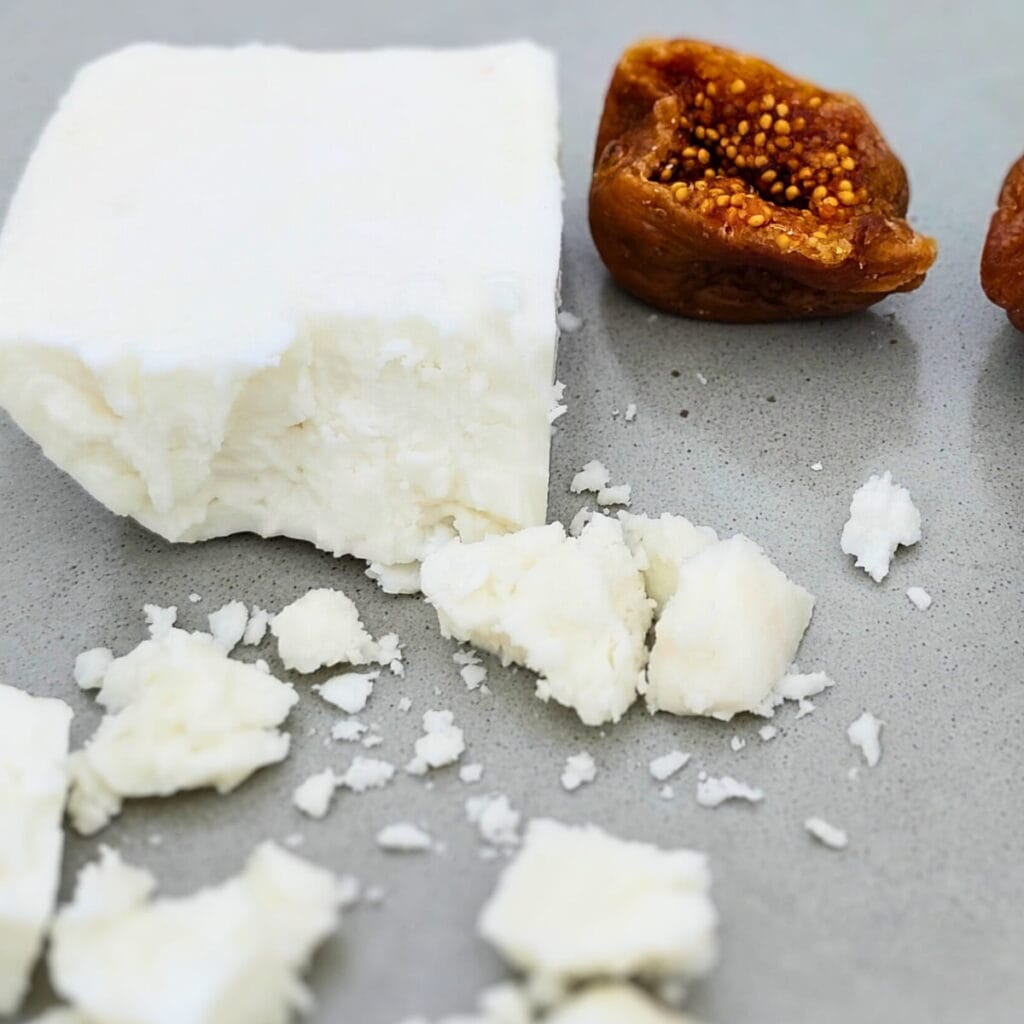
While I’m still experimenting with hard cheeses, I felt that I should share this important information for those who don’t have access to raw milk and would like to make soft cheese naturally and without buying freeze-dried cultures.
Bonus: If you’re gluten-free, I have a special bonus method for making natural cheese starter down below. It’s also in the experimental stage, but showing great promise and it certainly works for making soft cheese just the same as the sourdough starter method!
Cheesemaking Then and Now
I first heard about using sourdough as a cheese starter from David Asher in a podcast. He is a pioneer in the modern natural cheesemaking movement. And he’s a creative cheesemaker who doesn’t stop experimenting. He unearthed the long forgotten skill of making cheese the natural, ancestral way, that should never have been forgotten. And wrote a couple of awesome books about it. You can find the links in the shopping list at the end of this post.
I remember from my childhood about witnessing old farmers leaving raw milk out to clabber for making cheese. Natural cheesemaking used to be a daily pursuit back in the day for anyone who had dairy animals, and it still is in a few communities that are less affected by modernism.
But the loud voices of commercialism have mostly drowned out the traditional ones and have talked us into believing that cheesemaking, along with other traditional skills, is difficult and that you need some kind of commercially created cultures to make it work. This also requires a sterile environment, and the need to follow complicated methods to ever have success at cheesemaking.
And government restrictions add to the dilemma by banning the sale of raw milk in many states, thus effectively ruining any chance for natural and ancestral cheesemaking that uses raw milk.
So how can we make cheese naturally without having access to raw milk? Is there a way to avoid the commercial cultures and create a way to turn pasteurized milk into probiotic cheese? The resounding answer is yes! You’ve just found it!
What’s Wrong With Making Cheese With Manufactured Cheese Starter Cultures
When you purchase cheese cultures with names like mesophilic MM 100 or thermophilic TA 61 and so on, you receive specific strains of cultures that have been isolated from diverse live existing cultures. These are propagated in a laboratory, and are meant to produce specific results and, of course, create revenue.
There are dozens of strains out there and recipes that promise this one will make a perfect Gouda cheese and that one, plus that other one, an Emmentaler.
But this does not take into consideration the location where it will be made, what the dairy animals ate, where they grazed, how they are raised, the environment, local microorganisms, and so on.
Typically you will need to sterilize your equipment to disallow any other bacteria, and follow a daunting sequence of steps, using special tools and impeccable temperature adherence and timing. Following complicated recipes to a T is imperative to achieving the desired outcome. And yet, success is not guaranteed. And besides, goat’s milk behaves differently from cow’s milk or sheep’s milk. I’ve been there and do not want to go back!
The Fickle Nature Of Cheese and Why Trying To Copy A Named Cheese Don’t Work
The modern way of cheesemaking presents a great opportunity for labs to make money and using lab-made cultures is marketed as the ‘standard’ and only way to make great cheese. The word is that natural cheesemaking can be unpredictable and is to be avoided.
These cultures are big business. They contain additives that are not natural and are not normally listed on packs of cheese from a store. Even ‘natural’ cheesemakers use purchased cultures with all those undisclosed additives.
Granted, if you are looking to recreate a certain cheese that you sampled, you have a better chance at doing so by purchasing the exact same culture that the original maker used for making theirs, but you also have to create the same environment to be successful. Thus the need for following directions diligently and scrupulous sanitation to avoid any ‘foreign’ (meaning your native, local) microorganisms into this batch.
But there is so much that affects cheesemaking, and ultimately, the outcome cannot ever be expected to resemble an exact replica of the original specimen, or to duplicate the result exactly from one day to the next even in commercial cheesemaking. It’s inherently impossible to do and even the original can vary from one batch to another when you go to purchase it.
A brand of cheddar can be perfect one day and when you buy the same a few weeks later it’s dry and crumbly. And I’ve bought mozzarella from the store many times that wouldn’t melt. Ever had that happen?
A Better Approach
Why not change the approach from trying to copy something exactly to viewing cheesemaking as a simple natural process and the creative art it is.
Why not embrace the unpredictable nature of the cheesemaking process as an opportunity to create something unique and special. A cheese that has character and is truly one of a kind, could possibly be even better than anything you ever had from the store. And, in any case, it’s got terroir! Yours!
I found this natural approach to be so freeing. Breaking away from the rigidity of the rules of modern cheesemaking and embracing the natural, creative way is so empowering. I’ve gotten back to the old-fashioned way of cheesemaking many years ago now and I’ll never look back.
What is natural cheese
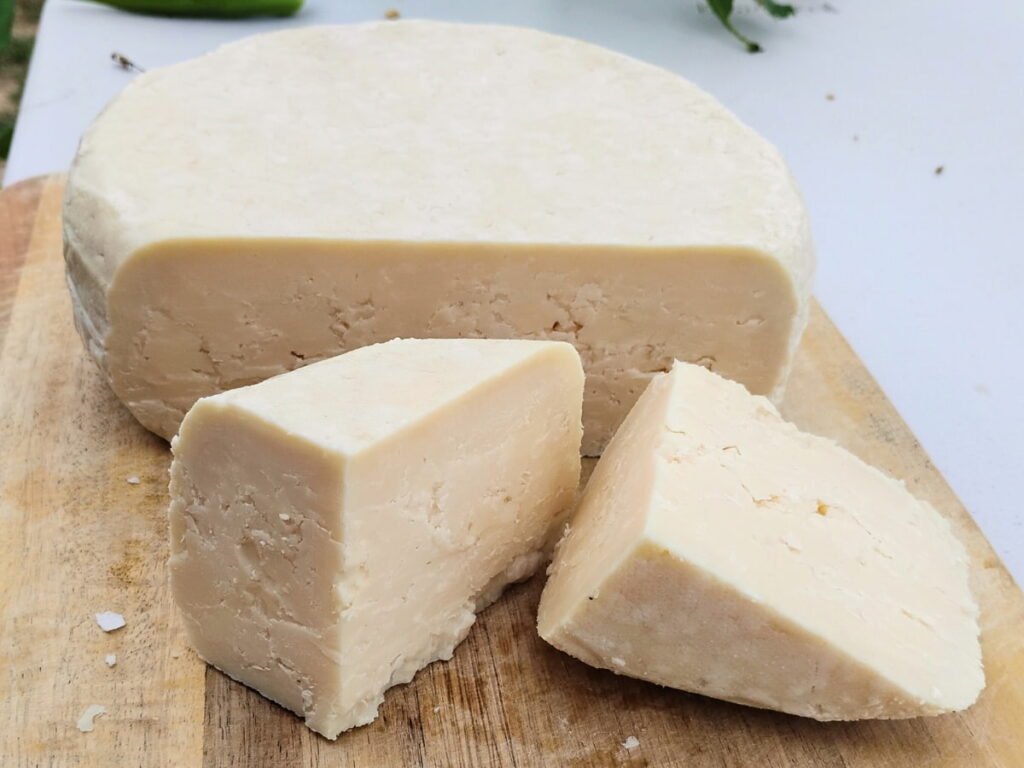
Modern cheesemaking seems to be all about copying what others have created, using expensive lab-made ingredients. Recipes for cheddar cheese, gouda, and emmentaler abound. Following these recipes can result in a beautiful cheese, but perfection is not guaranteed. And we miss out on pursuing the uniqueness and terroir of our own environment.
Ultimately, we need to take back the processes from those who are telling us we can’t do it ourselves!
Cheese has been made for thousands of years, way before labratories produced freeze-dried specific culture strains. Back then they did not have a labratory for copying specific strains of bacteria and complicated culture cocktails that are meant to copy an existing named cheese. But cheese was still made and everyone had their own methods and recipes.
Cheese is something that happens to milk naturally and has since the dawn of day. And making cheese is the original way that milk was preserved for the long term.
How Cheese Happens
The sugars in the milk are eaten by lactobacilli who like to get to work on fresh milk as soon as it leaves the dairy animal’s udder. This is how you get clabber. Leave the raw milk out at room temperature for a few days and you’ll have a nice, thick, tart clabber that will be great cheese when strained.
These bacteria are found in the milk and around the milk in our environment. For this reason, natural cheese is never the same from one day to the next or from one farm to the next.
My cheeses are noticeably different in the spring than they are in the fall. What my goats eat determines much of my milk’s makeup. Elevation of the location and weather play a role. The temperature outside and inside will make a difference as will the microbial dust in the air, and the different organisms that hang out in my kitchen on any particular day.
Aiming for consistent results is a pretty useless goal. Aiming for original, unique cheeses is a goal that will yield great results almost every time.
Milk is not destined to go ‘bad’, it just changes state. And we can do much to steer the process in a certain desirable direction. But ultimately the little critters at work on our cheese have a lot to contribute and they have a huge part in the outcome.
How Can Sourdough Starter Make Cheese?
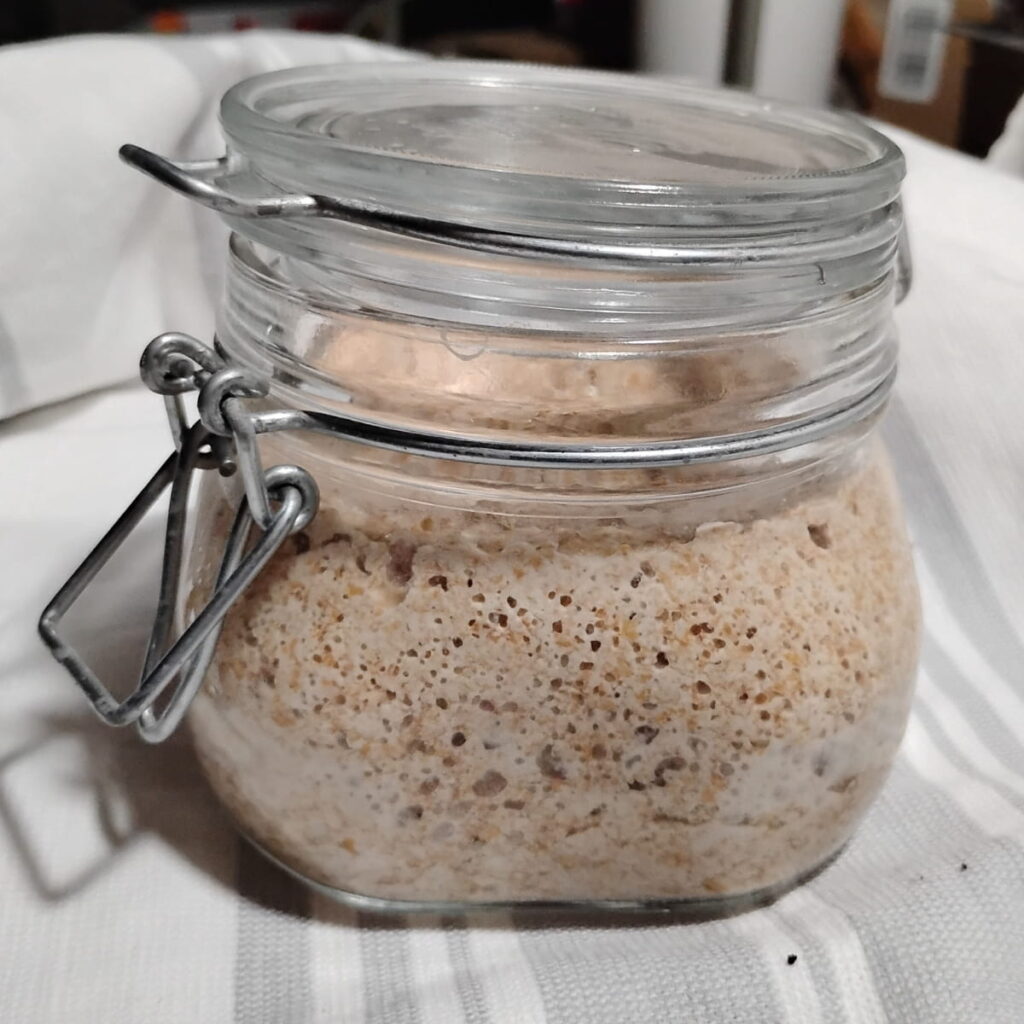
Making cheese naturally cannot be replicated with most pasteurized milk. The bacteria that’s necessary for turning milk into cheese gets reduced, damaged, or completely destroyed by pasteurization. Leaving pasteurized milk out at room temperature will almost certainly cause spoilage. The inherent ecosystem of milk has been destroyed and is not functional anymore.
But we can take this ‘dead’ milk and add a natural starter to initiate a cheesemaking process. Enter sourdough…
Sourdough starter is made the same way as natural cheese. Leave a slurry of flour and water out in a warm room and you’ll get the lactobacilli starting to work. After a few days they’ll have digested all the sugars in the slurry, and the slurry will taste and smell tangy. Keep feeding it and you can create a great sourdough cheese starter that you can keep going indefinitely.
Here is the scoop about using sourdough. If you’re starting with ‘dead’ milk, which has been pasteurized, adding sourdough will introduce some lactic acid bacteria to this milk and the bacteria who love the milk’s sugars will proliferate. You’ll get a clabbered milk that’s a bit different from raw milk clabber because it uses some different bacterial strains, but it will still work for cheese making.
Improves Your Health
Healthy cheese should contain a great variety of bacterial strains, not just one. Our gut microbiome can thrive when we can introduce a diversity of natural bacteria.
For that reason it is a great idea to eat a variety of Wild Fermented Foods, because each vegetable will have a different set of microbes to add to the mix and your sourdough cultured cheese will add yet another set. Eating the same purchased yogurt each day will not promote diversity, but when you add homemade cultured cheese and other fermented foods it will really help your gut-microbiome to thrive.
Why You’ll Love Making Cheese With Sourdough Starter
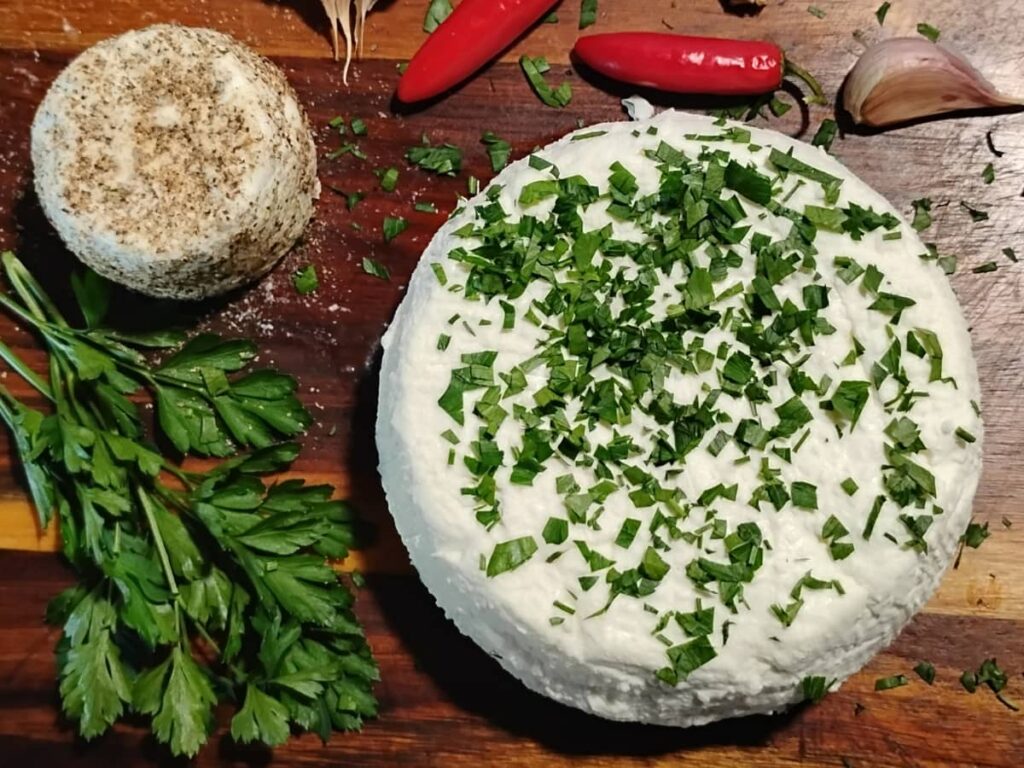
- You can make a delicious soft cheese with this easy method.
- You can ditch the expensive lab-manufactured freeze-dried single strain cultures with questionable ingredients.
- Anyone can make cheese naturally with this method.
- Be a rebel and break away from a commercialized system that should never have become so powerful. Get back to the basics and regain the skill of making cheese from scratch.
- Become more self-sufficient.
- You can get creative with cheese and make it unique. When you make your own with natural methods, you might just create something spectacular. It will certainly be completely your own.
- Homemade cheese does not need to follow complicated formulas. While you can certainly choose to use a complicated recipe, basic cheese can really be quite simple and super delicious. But it is also an art and requires us to pay attention, observe and learn from each batch we make.
- And it is incredibly satisfying and thrilling when you taste a delicious cheese that was made from scratch in your own kitchen with natural methods.
- This homemade natural cheese is full of diverse, live bacteria and microorganisms that will support gut-health and this, in turn, is essential for overall wellness and a strong immune system. Turn inflammatory ‘dead’ milk into a probiotic-rich, gut-healing food.
- This soft cheese is super versatile! You’ll be amazed at all the different ways you can use it. Check out my many Quark cheese recipes such as German Cheesecake, Lemon Cheesecake Mousse, and creamy Strawberry Quark Dessert. Or just mix with fresh herbs and some garlic for a delicious dip or spread. More about this later.
Here Is A Secret From My Experimentation Station For You Gluten-Free Cheesemakers

If you ferment vegetables using the wild fermentation method, you can also use the fermentation juice in place of sourdough to make a cheese starter culture. Follow the exact same method. It will take about 3-4 renewals before the flavor of your vegetable brine is gone, but after that you’ll have a delicious clabber that can be used the exact same way as the sourdough starter. Follow one of my recipes to Ferment Vegetables, such as Sauerkraut, and use the resulting brine.
If you have a milk kefir going, you can also use milk kefir to create delicious soft and hard cheeses. I’ve made many cheeses years ago with milk kefir. Since milk kefir contains a good amount of yeasts, it tends to be bubbly and this will transfer to your cheeses. Most likely you’ll have floaty feta cheese and hard cheeses may look like Emmentaler.
These days I prefer using the raw milk clabber, but I still have some 3 year-old aged cheddar cheeses in my cheese-cave fridge that were made with kefir and they taste fantastic.
Tips To Make Great Cheese With Sourdough Starter
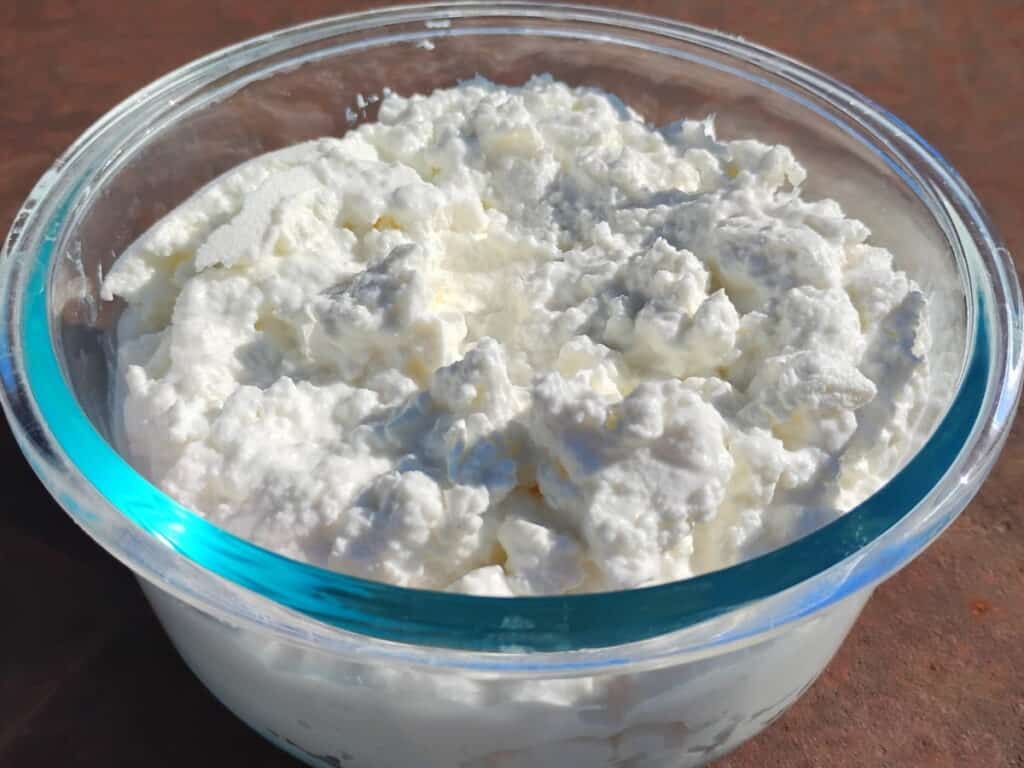
- If you want to scale up the cheese recipe and make more, then use one tablespoon of sourdough clabber, kefir, or fermentation brine for each quart of milk. I have made this cheese with a quart before and used one tablespoon of the starter. This yielded a cup of cheese.
- What milk to use: Soft cheeses can be made with ultra pasteurized milk, but pasteurized milk is better for you and yields better results. And you’ll definitely want to use pasteurized milk for hard cheese, not ultra pasteurized. In my trials, the ultra-pasteurized did not coagulate with rennet.
- If you want to keep your starter going indefinitely after you created it, warm a cupful of milk, add a teaspoon of the latest batch of clabber, let it get thick and then repeat or refrigerate. You can eat your previous clabber and use the freshest one for making cheese or more clabber once a week or so.
- Long term storage: To keep some of your homemade cheese starter culture handy for the long-term, you can also freeze some in an ice cube tray and use those cubes to make cheese when you’re ready. Transfer to a freezer container after they are frozen solid. They’ll be fine for about 3 months. You may also do this with the whey from draining your cheese.
How To Make Cheese With Sourdough Starter Culture

This recipe uses half a gallon of milk which will yield about 1 pint of fresh cheese. It’s easy to make more or less, just make sure you use a big enough pot and add one tablespoon of starter per each quart of milk.
Check the resource list at the end of this post for an ingredients and equipment shopping list.
Equipment
Small stainless steel 1 quart pot – to warm the milk for the starter cultures. You can also use a pint jar, add the milk and place it into the pot with hot water in it.
3 quart sauce pot – for heating the milk to make cheese. Stainless steel is best, and do not use aluminum or other reactive pot as you’ll be creating an acidic milk clabber. You can also make this cheese in a glass bowl or half gallon canning jar, and heat it in a water bath.
A spoon for stirring – A skimmer is ideal or any other spoon with holes. But a regular large spoon works quite well for this small batch.
Measuring tablespoon – For each quart of milk, you’ll need a tablespoon of starter. If you make a gallon batch, use a quarter cup. My recipe here is for 2 quarts and that requires an eighth cup or 2 tablespoons of the starter.
Butter muslin cheese cloth or flour sack towel – This is for draining the whey from the finished cheese curd. You can use any fine mesh cotton or linen tea towel too. Don’t use the cheesecloth from the grocery store.
A stainless steel or glass bowl – Use this to catch the whey.
Thermometer (optional) – I like using a thermometer to just make it easier to catch the milk at the right time. But you can put your wrist on the milk container and once it feels baby-bottle warm, you can proceed with the cheese making.
Ingredients

Milk – Try your best to find regular pasteurized milk, but ultra pasteurized does work for soft cheeses. The proteins in the milk get altered during the high heat pasteurization process and that will affect the behavior in cheesemaking and the consistency.
You’ll need about 3 quarts of milk to make this recipe including the starter.
If you can get organic pasteurized milk, I recommend using that, but I cannot get organic pasteurized milk here, where I live. Organic anything is rare. All the organic milk they carry is ultra-pasteurized. But I used that for making the starter and it worked great.
Whole milk, 2% or 1% are the best choices. Skim milk yields less cheese and is not as economical to use for cheesemaking.
Sourdough or fermentation juice – active starter or unfed discard as well as refrigerated aged fermentation juice all work. If you’re using a strongly flavored fermentation juice, it might take several days of renewing your starter culture before the original fermentation juice flavor disappears. I used some juice from fermenting tomatoes.
Salt – My recommendation is to use Redmond’s Real Salt or Himalayan pink salt. You can also use unrefined sea salt. Do not use anything that has additives! And the best salt is unrefined salt.
Steps For Making The Starter Culture
Start with a cup milk and heat the milk to about 80-85 degrees.

Add a teaspoon full of sourdough starter.
Mix well.

Cover and let it sit in a warm spot for about 24 – 48 hours. This first round will take the longest. But eventually, you’ll find that the milk will clabber and turn thick like yogurt. You can taste it if you like, but it won’t taste that great yet. It takes a few renewals to make it taste delicious, so let’s do this next step.
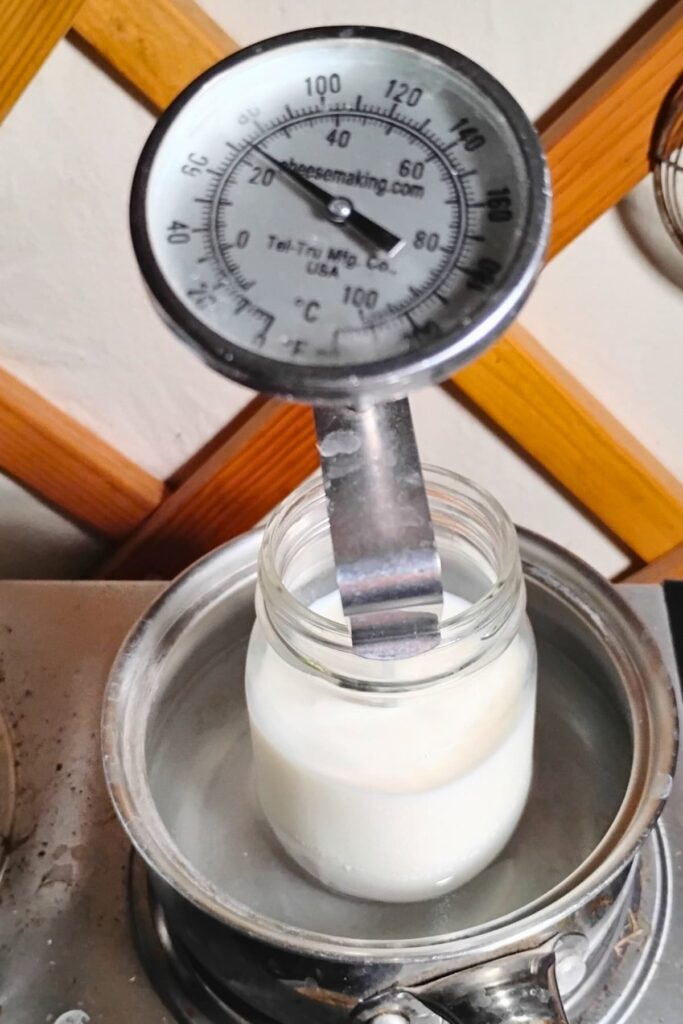
Warm another cup of milk in a fresh jar to about 80-85 degrees.
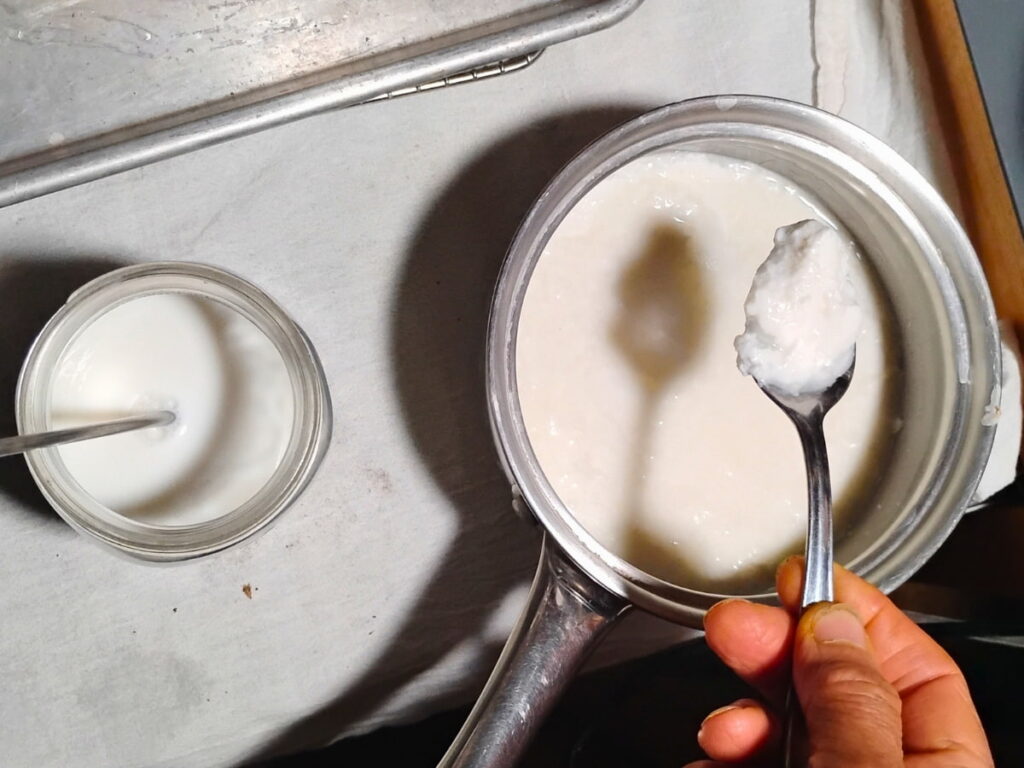
Add a teaspoon of the clabber you made the day before to your fresh cup of milk.
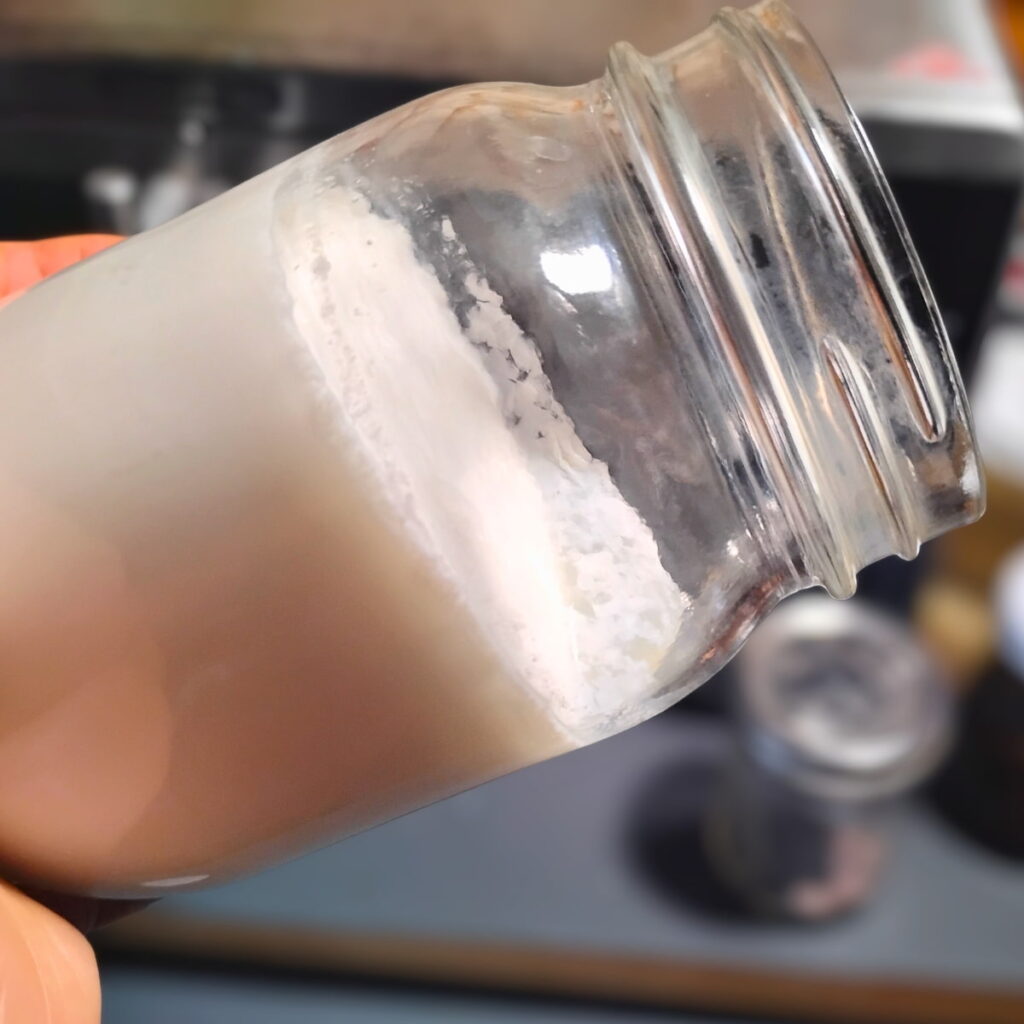
Cover and let it sit at a warm room temperature for another 12-24 hours or till it’s thick. This should take less time now.

Repeat a couple more times. By day 3 or 4 your clabber should start to smell wonderful and taste delicious. Now you can proceed to make cheese with it, or just eat it like you would yogurt it will be full of live probiotics. You brought dead milk back to life 😁.
Keep it going by repeating the process or refrigerate your clabber for up to a week. I wouldn’t wait too long before feeding it again while it’s this young, maybe a week. After it gets more mature, I would expect it to last in the fridge for a long time between feedings.
Steps To Make A Simple Soft Cheese
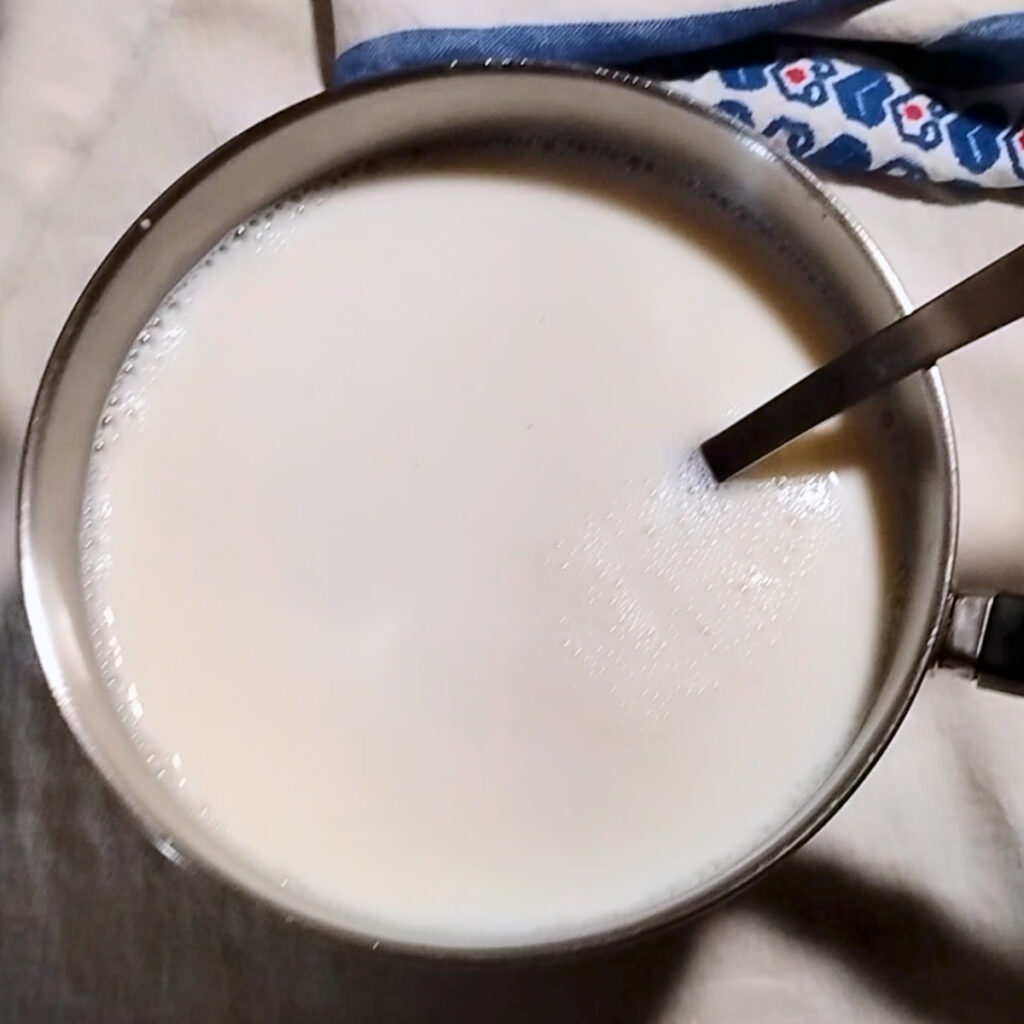
When you are ready to make a delicious soft cheese, prepare your half gallon of milk by heating it to about 85 degrees.

Stir in one tablespoon of the sourdough clabber for each quart of milk.
Let sit in a warm spot out of direct sun until it is very thick like yogurt, about 24 hours. I like to wrap my incubation container in a thick towel to keep the temperature even inside it and to keep it from cooling too quick.
Line a bowl with a cheesecloth.

Scoop into the clabber into the cheesecloth.

Hang to let drain until it’s the desired consistency.
Save the whey for other uses. You can keep some of it to start a new batch of cheese later. Check my post on uses for whey if you want some ideas. Whey is so valuable, never toss it!
Optional: Mix the drained curd with salt and hang to drain another hour or so. Don’t use salt if you’ll be using this in sweet desserts, but for long term storage you’ll want to add salt.
Storage

Transfer the fresh cheese to a serving bowl and enjoy. Store for up to a week in the fridge if unsalted.
For long storage, it needs to be salted. Then, if you pack a pint jar full to the very top, squeezing out as much of the air as possible as you pack it, and seal it well, it can last in the refrigerator for weeks and months. This can also be stored in a cold cellar.
Ways To Use Cheese Made With Sourdough Starter
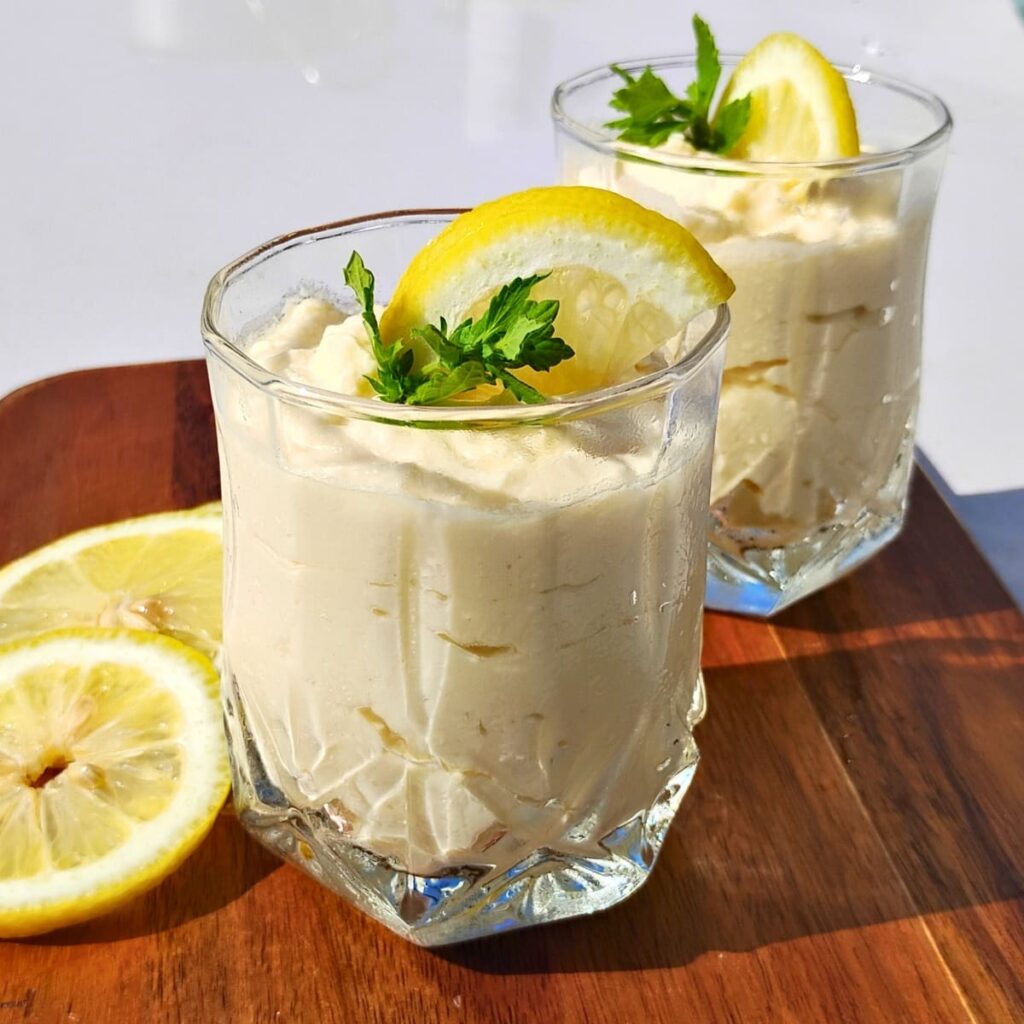
This soft cheese is so simple and will be of very soft consistency. It is perfect for desserts like Lemon Cheesecake Mousse, Orange Quark Cheese Mousse, or Strawberry Quark Dessert.
Simply mix with honey or maple syrup to make a delicious fruit topping or sweet, creamy dip. Fold in some whipped cream and make a fruit pizza or fresh fruit pie, or mix it with whole berries for a delicious, healthy treat.
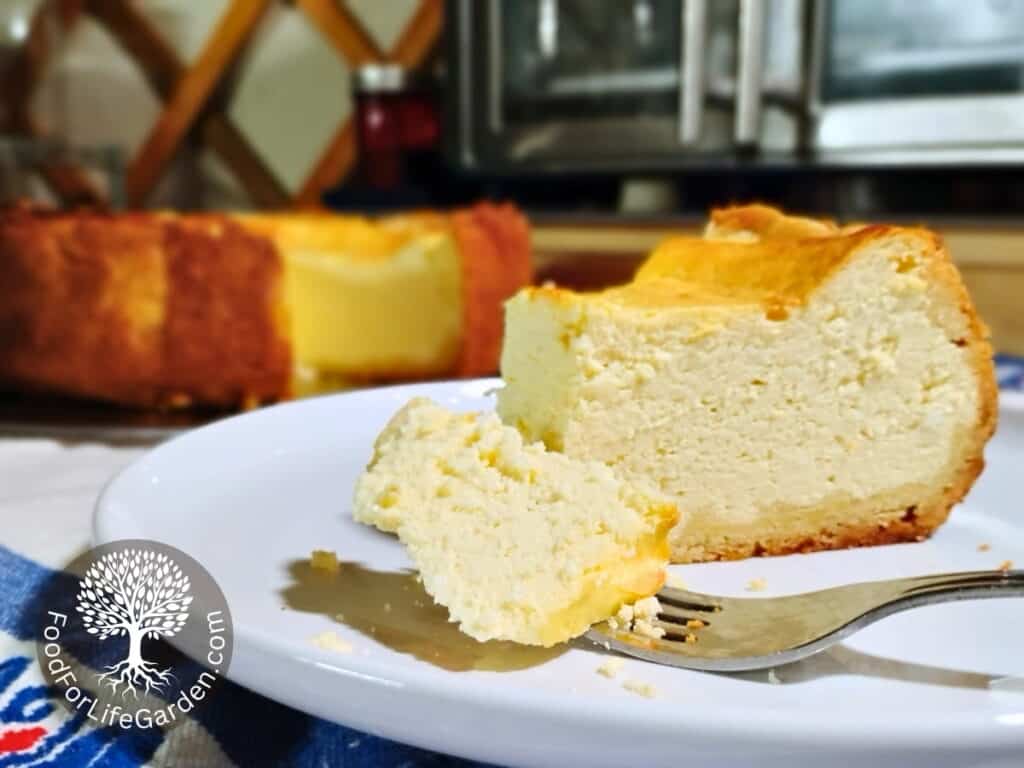
It’s perfect for making German Cheesecake and Apple Pie Cheesecake, and you can make any of your favorite cheesecake recipes more natural. Check out my Cheesemaking section for ideas!
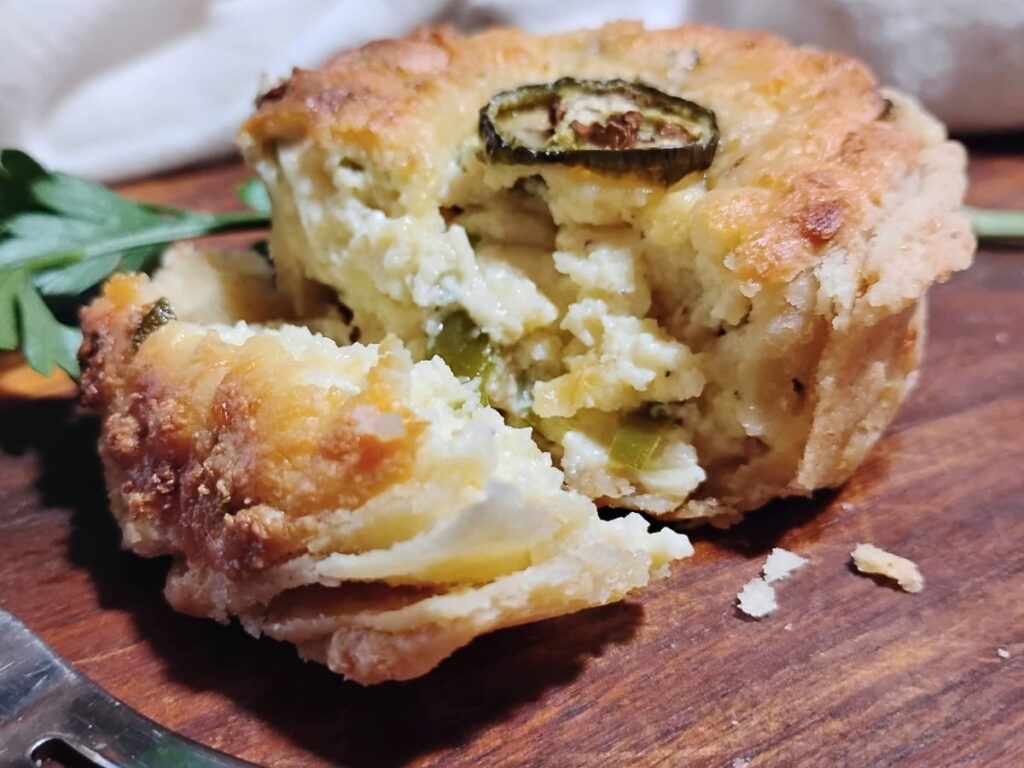
Use it for making savory Jalapeno Mini Quiches. Or use it in any savory cheesecake recipe for a lighter and natural alternative to store bought cream cheese.

Mix with fresh or dried herbs, chopped garlic and, if you like, chopped jalapenos. This is a great spread to eat on a buttery fried slice of my easy Kamut Sourdough Bread, serve it with crackers, or use it as a dip.
Form little balls, roll in mediterranean herbs and submerge them in olive oil. Store in the fridge and age for a 4-6 weeks. Serve the balls with crackers and use the oil for a delicious bread dip or salad dressing.
It’s really good just eaten plain, salted or unsalted.
Take It A Step Further

If you are interested in taking this a step further, you can add a little bit of rennet to make a firmer cheese that can be formed into cheese logs, or poured into cheeseforms and turned into soft feta cheese. You’ll find some great, easy recipes on my blog for Chevre, Quark Cheese, and Sirene, a Feta style brined cheese. Use this sourdough based cheese starter culture and follow the instructions in those recipes.
Your Questions Answered
Can I use unfed sourdough or discard?
Sure can! Use either active sourdough or unfed sourdough. The microorganisms are in the sourdough and will wake up once they get some food (your milk) and warmth. It might take just a tad longer, but it’s going to work just fine.
Can I use any milk?
It depends. You can use pasteurized for any cheese recipe. Ultra-pasteurized is ok for soft cheeses, but won’t work for hard cheeses or mozzarella. UHT (Ultra high temperature) is severely denatured and should not be used for cheesemaking. Your best bet is to use just regular pasteurized milk, which I can get at Walmart here. As far as fat grades go, you can use what you prefer. Whole milk generally makes a much creamier cheese than either 1% or 2% milk. But in Germany most quark is actually made with the less fatty milk and then people add cream to it later to make a creamy cheese. Skim milk is going to make a harder cheese and normally is only recommended for something like parmesan or romano. You’ll get less yield from skim milk too because it is mostly water. So using higher fat cheese is more economical as you’ll get more cheese for the same money.
How long can I keep my starter
You can keep it going by feeding a teaspoonful of the starter to a fresh cup of warm milk, let it thicken and then refrigerate it. Repeat every week when young and it should be fine to renew once every 2-4 weeks once mature. Use it as needed for making cheese, straight from the fridge.
For longer storage, freeze it in ice cube trays and use a 1/8 cup cube for a half gallon batch of cheesemaking when you’re ready to make cheese.
Enjoy your Homemade Cheese With Sourdough Starter
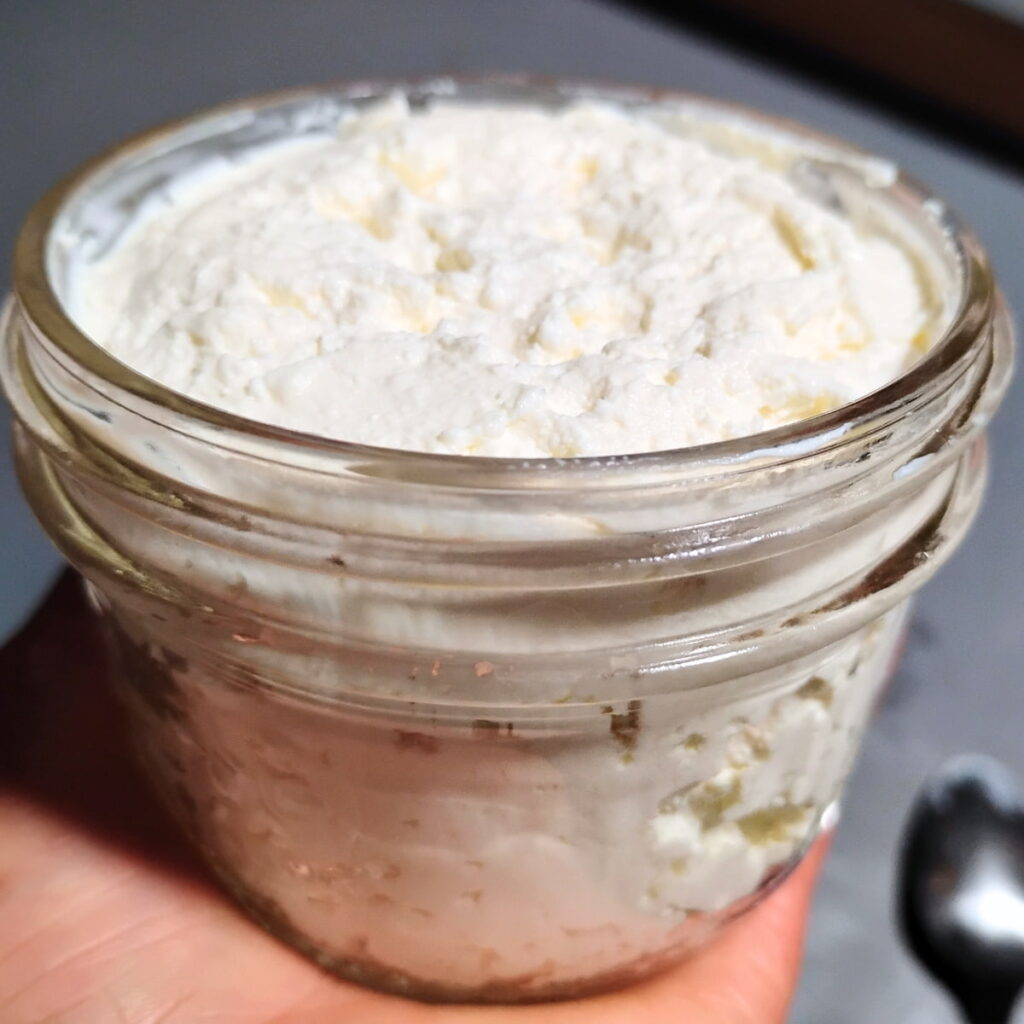
I hope you’re as excited as I am about this option for making natural cheese without raw milk. This is truly a great way to keep it as natural as possible for everyone.
Making a wild sourdough starter from scratch is the first step and if you haven’t made sourdough yet, be sure to read how to do that in my Sourdough Starter Tutorial.
You’ll be able to use that starter to make delicious sourdough recipes such as a Kamut Sourdough Bread that is delicious paired with your freshly made soft cheese, also made from the sourdough starter.
And if you want to use fermentation brine, you can first make any kind of Wild Fermented Vegetable and use a few spoonfuls of the resulting brine.
And both are so easy to make. I hope you get to try it and see for yourself. And then enjoy your awesome fresh homemade natural cheese!
Have you made this recipe? I’d love to get your feedback and your ⭐⭐⭐⭐⭐ rating! And I’d love to hear what your favorite cheeses are and if you’d like to learn more about it. And please don’t hesitate to ask in the comments if you have any questions!
Join the Food For Life Garden Community for more great recipes and homestead tips and ideas. I’m always adding new content. Don’t miss any new posts and learn more about my off-grid farm life.
Other Recipes You Might Like
Awesome Uses For Whey – Save the whey! And use it in dozens of ways. You’ll find something to do with whey for every single drop. It’s nutritious, versatile, healthy, and makes great fizzy sodas!
How to make your own sourdough starter – This forms the basis for any gut-healthy sourdough bread, and for making cheese starter culture.
How To Ferment Vegetables – Make your own wild fermented vegetables and use the brine to make cheese starter culture.
Make German Quark cheese – Make authentic German Quark, also called Topfen. A versatile fresh, soft cheese that is a staple in German cooking.
Make your own chevre cheese from scratch – How to make super versatile creamy, spreadable cheese that is incredibly versatile. Replace store bought cream cheese with this healthy version!
How To Make Sirene (Bulgarian Feta) -Try making your own feta-style cheese. Learn all about this wonderful and easy to make cheese and get the recipe!
Natural cheese making Process – Make your own mesophilic and thermophilic cheese starter and use it to make cheese the natural way. Make yogurt from scratch with your own homemade starter too.
Creamy Quark Dessert With Oranges – Use quark in a German dessert, a creamy, luxurious mousse, healthy enough for every day desserts, but fancy enough for special occasions.
Awesome Strawberry Quark Cheese Mousse – A delicious German quark dessert with pureed strawberries.
Make an ancient grain sourdough bread – The easiest sourdough sandwich style bread you can imagine. No kneading required and it bakes up nicely airy and chewy and tastes amazing.
Foraged Wild Weeds Pesto Recipe – Make a delicious Pesto with dead nettles and other wild weeds with this guide to foraging wild greens. Pairs great with homemade soft cheese!
Bonnyclabber – What is clabber milk and its uses Learn to make bonnyclabber, the original cheese. Nature’s way of preserving milk. A tasty, creamy cheese that makes a really good frosting for einkorn zucchini bread.
Pin This Recipe For Later

Resources / Shopping List
1 quart pot
3 quart sauce pot
Redmond’s Real Salt
Himalayan pink salt
Cheese cloth
Flour sack towels
organic flour sack towel
Recommended Books On Natural Cheesemaking
The Art of Natural Cheesemaking: Using Traditional, Non-Industrial Methods and Raw Ingredients to Make the World’s Best Cheeses by David Asher
Milk Into Cheese: The Foundations of Natural Cheesemaking Using Traditional Concepts, Tools, and Techniques
Recommended If You’re Planning To Homestead Or Thinking about Adding Dairy Animals
The Independent Farmstead: Growing Soil, Biodiversity, and Nutrient-Dense Food with Grassfed Animals and Intensive Pasture Management by Beth and Shawn Dougherty
Here is a great article by Milkwood on reclaiming our cheese sovereignty!
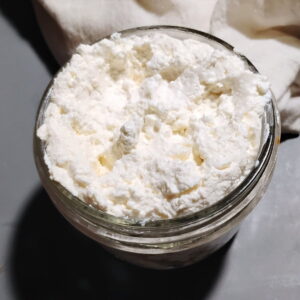
How To Use Sourdough To Make Cheese
Equipment
- A small post – to warm your cupful of milk for making the starter culture
- A stainless steel pot for heating the milk – 3 quart or big enough for the amount of milk you want to turn into cheese. Don't use aluminum. You can also use a glass bowl for your milk and place it in a warm water bath to heat the milk.
- Large spoon for stirring
- Measuring tablespoon
- Buttermuslin or floursack towel – for straining the cheese
- A glass or stainless steel bowl – to catch the whey (it will need to hold at least 2 quarts)
- Thermometer (optional) – You can use your wrist or finger. It should feel 'baby bottle warm'
Ingredients
- 2 quarts Milk – I always use whole milk for my cheese, but you can make it with reduced fat milk too. I'd use at least 1% fat. Yields are less with lower fat content.
- 2 tbsp Sourdough or fermentation juice – This works with active or discard (unfed) sourdough
- 1½ tsp Sea salt (optional) – no additives! Salt is neccessary for long-term storage.
Instructions
Make The Starter Culture (Clabber)
- Start with a cup milk
- Heat the milk to about 80-85 degrees.
- Add the sourdough starter.
- Mix well.
- Cover and let it sit in a warm spot for about 24 hours or maybe longer. This first round will take the longest. You'll find that the milk will clabber and turn thick like yogurt. You can taste it if you like, but it won't taste that great yet. It takes a while to make it taste delicious, so let's repeat this.
- Warm another cup of milk in a fresh jar and add a teaspoon of the soured milk to your fresh cup of milk. Cover and let it sit at a warm room temperature for another 12-24 hours or till it's thick. This should take less time.
- Repeat a couple more times. By day 3 or 4 your clabber should start to smell wonderful and taste delicious. Now you can proceed to make cheese with it, or just eat it like you would yogurt.
- Keep the starter going by repeating the process or refrigerate your starter culture for up to a week. I wouldn't wait too long before feeding it again while it's this young. After it gets more mature, I would expect that it will last in the fridge for a long time between feedings.
Make A Simple Soft Cheese With Your Sourdough Cheese Starter
- If you are ready to make a delicious soft cheese, prepare your milk by heating it to about 85 degrees. (baby bottle warm)
- Stir in two tablespoons of the sourdough clabber. Mix it well, but don't beat air into the milk. Then cover the pot and set aside. (You can also transfer it to a mason jar or a glass bowl at this point if you need your pot).
- Let sit in a warm spot out of direct sun until it is very thick, about 24 hours. I like to wrap my incubation container in a thick towel to keep the temperature even inside it.
- Line a bowl with a cheesecloth.
- Scoop into the clabber into the cheesecloth and knot up the ends.
- Hang to let drain until it’s the desired consistency.
- Save the whey for other uses. You can keep some of it to start a new batch of cheese later, and you can freeze some of it in ice cube trays, and bag the cubes once they are solid frozen. One ⅙ cup ice cube can be used to start half a gallon of milk next time you make cheese. Check my post on uses for whey if you want some ideas. Whey is so valuable, never toss it!
- Optional: Mix with salt and hang to drain another hour or so. Don’t use salt if you’ll be using this in sweet desserts, but for long term storage you’ll want to add salt.
Storage
- Transfer to a serving bowl and enjoy. Store for up to a week in the fridge if unsalted.
- For long storage, it needs to be salted. Take the salted cheese and pack a pint jar full to the top, squeezing out as much of the air as possible while filling, and seal it well, it can last in the refrigerator for weeks and months. This can also be stored in a cold cellar. Note that the flavor may get stronger over time. As cheese ages it continues to ripen and progress, but at a much slower rate when chilled.
Notes
Tips For Making Great Cheese With Sourdough Starter
- If you want to scale up the cheese recipe and make more, then use one tablespoon of sourdough clabber, kefir, or fermentation brine for each quart of milk. I have made this cheese with a quart before and used one tablespoon of the starter. This yielded a cup of cheese.
- What milk to use: Soft cheeses can be made with ultra pasteurized milk, but pasteurized milk is better for you and yields better results. And you’ll definitely want to use pasteurized milk for hard cheese, not ultra pasteurized. In my trials, the ultra-pasteurized did not coagulate with rennet.
- If you want to keep your starter going indefinitely after you created it, warm a cupful of milk, add a teaspoon of the latest batch of clabber, let it get thick and then repeat or refrigerate. You can eat your previous clabber and use the freshest one for making cheese or more clabber once a week or so.
- Long term storage: To keep some of your homemade cheese starter culture handy for the long-term, you can also freeze some in an ice cube tray and use those cubes to make cheese when you’re ready. Transfer to a freezer container after they are frozen solid. They’ll be fine for about 3 months. You may also do this with the whey from draining your cheese.
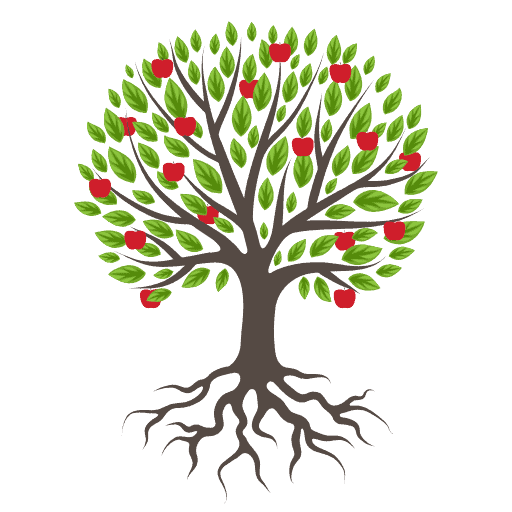
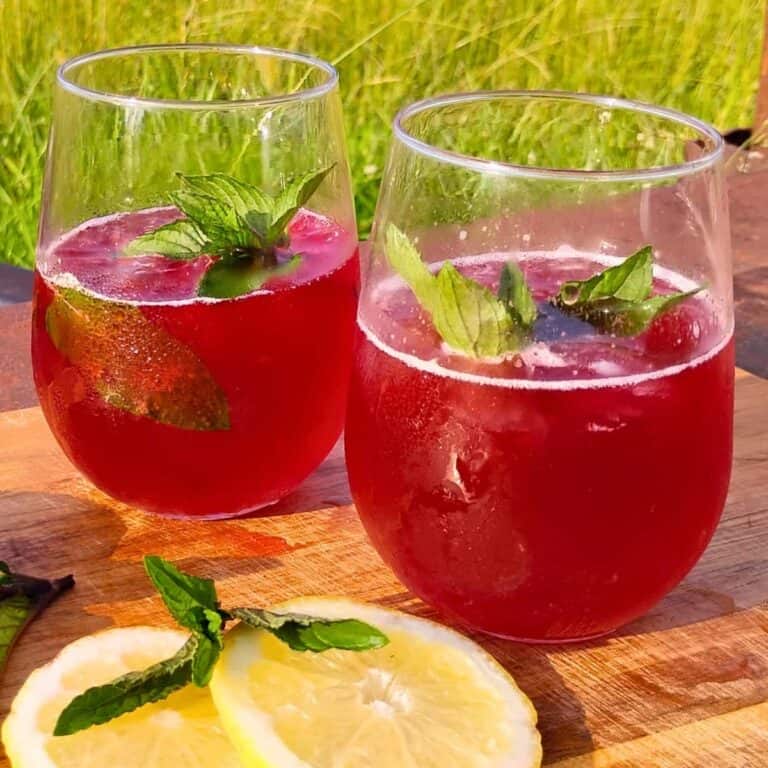

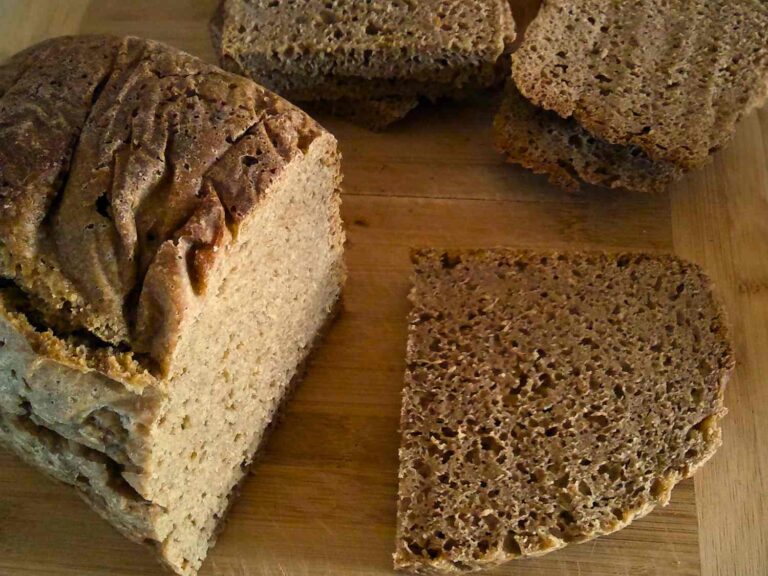

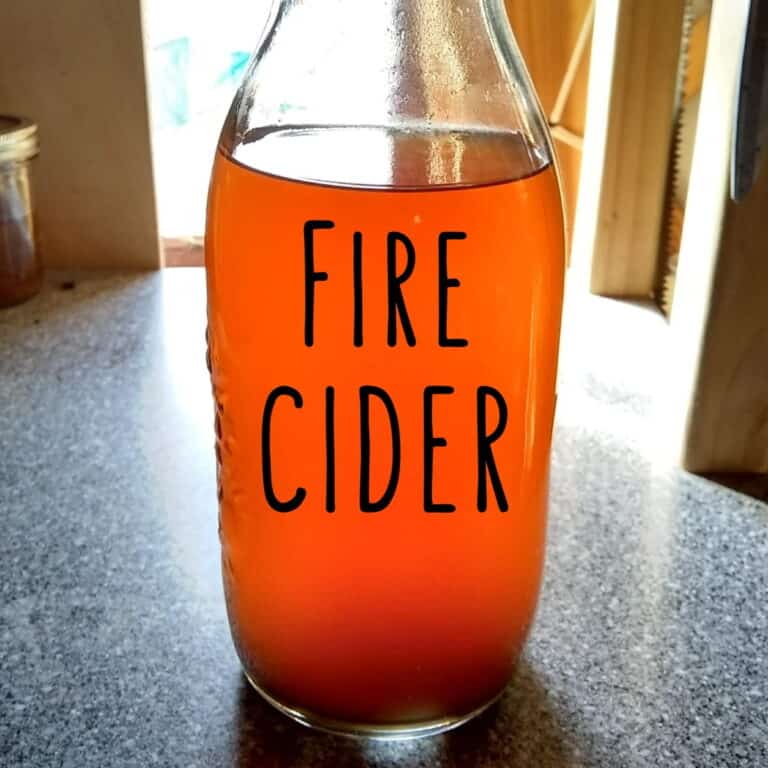
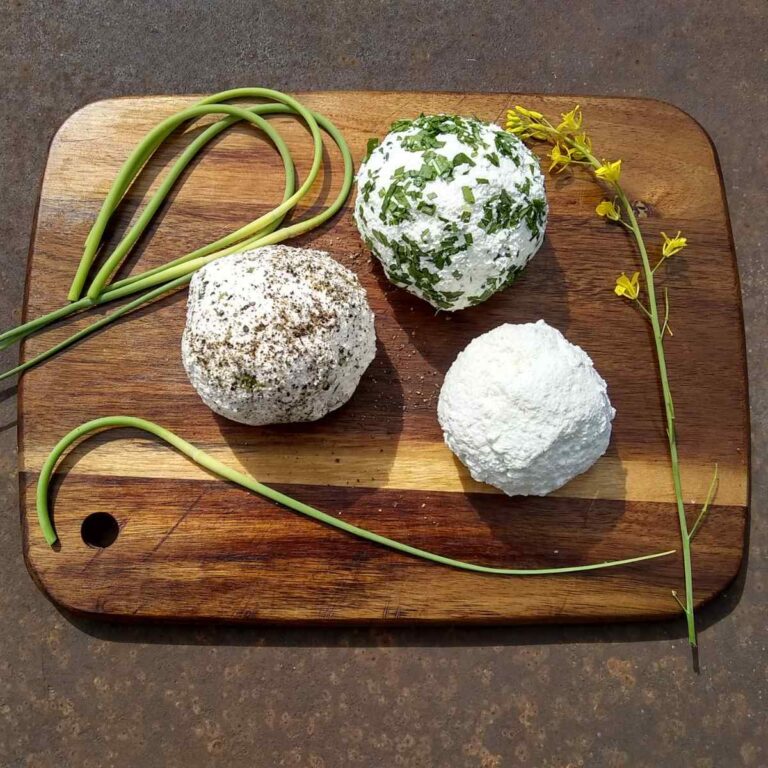
Here is a great recipe for making soft cheeses like Quark or Chevre from scratch using a natural method even if you don’t have raw milk. If you make sourdough or ferment vegetables, you already have the neccessary ingredient. Please ask if you have any questions right here in the comments and I’ll try to get back to you as quick as possible.